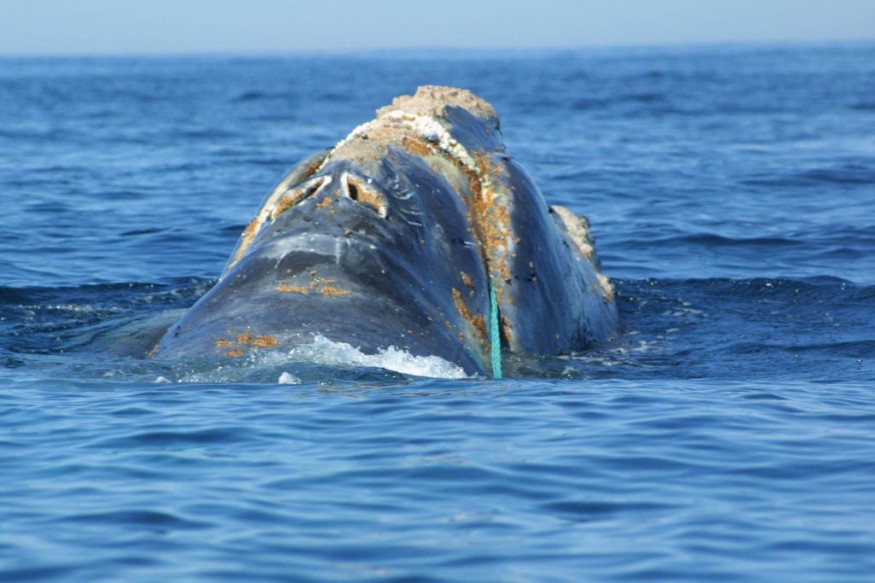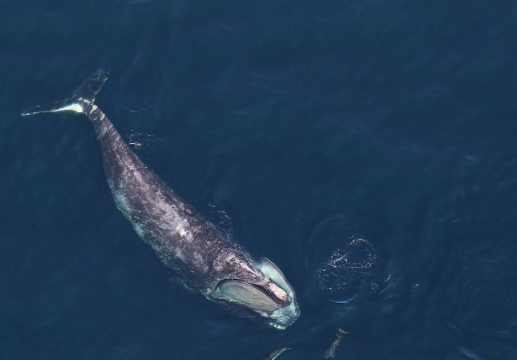Ocean specialists believe there's no likelihood of releasing two 16-foot lengths of fishing rope tied to a North Atlantic right whale that gave birth while trapped in a fishing line while her calf is still small.

Right Whales
Right whales' bodies are rotund, with arching rostrums, V-shaped blowholes, and dark gray or black skin. The most recognizable trait is the rough patches of skin on a right whale's head, which look white owing to parasitism by whale lice.
The western North Atlantic Ocean is home to nearly 400 North Atlantic right whales. They feed in locations off the Canadian and Northeast American shores, ranging from New York to Newfoundland throughout the northern spring, summer, and fall. The Bay of Fundy and Cape Cod Bay are particularly prominent feeding grounds.
They migrate south in the winter to give birth in Georgia and Florida. Over the last few decades, there have been a few sightings further east; in 2003, three sightings were recorded close to Iceland. Although reports from old whalers suggest they're more likely to stray, these might be the relics of a nearly extinct eastern Atlantic population.
However, there have been a few sightings in Norway, Ireland, Spain, Portugal, the Canary Islands, and Italy; the Norwegians are of Western ancestry.
Snow Cone

The endangered whale, dubbed Snow Cone by ocean observers, was seen on camera by the Florida Fish and Wildlife Commission earlier this month off the coast of Georgia. The newborn calf by her side and the twin ropes around her lips are seen in the footage.
Last March, she was discovered tangled in fishing gear in Plymouth Harbor, Massachusetts, prompting rescue operations by Center for Coastal Studies teams and removing nearly 300 feet of rope.
The whale managed to move a great distance and gave birth while hindered by the ropes, which is an uncommon occurrence among this diminishing species, which is endangered by the climate crisis, ship strikes, rope entanglements, and other human factors.
Challenging Rescue
Experts claim they won't remove her from the remaining fishing gear for the foreseeable future because the calf is continuously by her side.
According to the National Oceanic and Atmospheric Administration (Noaa), a team of disentanglement responders from the Georgia Department of Natural Resources traveled to Cumberland Island, where the whale was photographed, but "determined that trying to remove or further shorten the rope would be too dangerous with a newborn calf present."
"Right whale calves swim near their mothers, making a safe approach by responders difficult, if not impossible." Snow Cone and her infant are still being monitored by Noaa Fisheries and its partners."
Losing a Calf
Snow Cone lost a male calf in a collision with a vessel off the coast of New Jersey last summer but still managed to migrate 1,300 miles south from summer feeding grounds off Canada this year to give birth while caught in the ropes, according to Barb Zoodsma, large whale recovery coordinator for the agency's southeast regional office.
"Clearly, Snow Cone is a force to be reckoned with. "However, she and her calf's current status is really alarming," she stated.
According to Noaa estimations, just approximately 350 right whales are left in the North Atlantic. Snow Cone and her infant are the sole known mother-calf pairing of the 2021-22 right whale breeding season.
For more news from the animal kingdom, don't forget to follow Nature World News!
© 2025 NatureWorldNews.com All rights reserved. Do not reproduce without permission.





